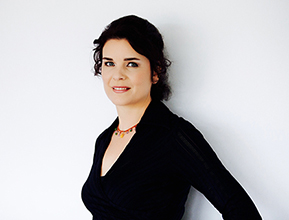What are raw foods?
Raw foods consist of uncooked foods with emphasis on vegetables, sprouted grains, nuts, and legumes, seaweeds, and other foods.
What is the difference between raw foods and cooked foods?
Raw foods provide a diet high in enzymes. Eating raw foods provides the body with more enzymes, reduces the amount of energy necessary for digestion, and increases the amount of energy available for optimal health and healing.
Cooked foods lack high levels of enzymes. Natural enzymes are killed off through cooking over 118 degrees F (48 degrees C). If enzymes are not provided in foods, enzymes are pulled from the reserves of the enzyme account and energy is expended to provide enzymes necessary for digestion.
What are the raw foods health benefits?
- Enzymes
- Oxygen
- Chlorophyll
- Vitamins
- Essential fatty acids
- Fiber
- Provide more alkaline minerals
Enzymes
Enzymes are protein catalysts necessary for all biological work in every living plant and animal.
Each individual is given a limited amount of enzymes at birth to function throughout life. Aging typically causes enzyme depletion.
By age 50, people usually have only 30 percent of their endogenous (digestive) enzymes.
-Edward Howell, MD, author of Enzyme Nutrition
The middle-aged feeling is due to diminished enzymes.
-James Summer, MD, Nobel Prize winner in chemistry
The only way people can make deposits into their enzyme account is with food. A raw foods diet is high in enzymes.
Research indicates that high levels of enzymes may break away the protective fibrin around cancer cells, alter cellular structure, and signal the immune system.
If enzyme counts are below the necessary level to maintain a healthy cellular environment, dormant yeast, fungus, and mold spores are activated in the enzymes, according to research by Robert Young, PhD. Without adequate enzyme deposits that can help reverse this condition, the infected enzymes are destroyed by the fermentation process. If these enzymes do not exit the body, they become a source of toxicity.
Oxygen
When we inhale, we breathe in oxygen. Oxygen is necessary for life. Otto Warburg won a Nobel Prize in 1931 for his research about oxygen and cancer. His work demonstrated that low levels of oxygen support a cancerous environment. Raw foods provide the body with high levels of oxygen. Exercise and sunlight are two other natural sources of oxygen.
Chlorophyll
Chlorophyll is a green pigment in plants that allows them to obtain energy from light. Raw foods contain chlorophyll that oxygenates the bloodstream.
Vitamins
Vitamins are nutrients for the body and essential to health. Raw foods are packed with vitamins such as calcium, sodium, potassium, and magnesium. These vitamins help balance the ratio between alkaline and acid minerals in the body.
Essential fatty acids
Essential fatty acids are fatty acids necessary for cellular function and therefore life. Essential constituents of all cell membranes that control the passage of compounds in and out of cells, they support brain health, the integrity of nerve tissue, and nervous system function. Essential fatty acids are classified into two groups: omega-3 fatty acids and omega-6 fatty acids.
Healthy essential fatty acids in a raw diet come from nuts, some oils, avocado, and leafy green vegetables.
Fiber
Fiber aids digestion, absorption of bodily toxins, and elimination. Raw foods contain high levels of fiber.
Balanced ratio between alkaline and acid minerals
Raw foods are alkaline and help better balance ratios in the body.
How often should people eat raw foods?
Depending upon their health status plus other conditions such as during conventional cancer treatments, some cancer patients benefit from eating raw foods daily. In summer, some people emphasize raw foods with between 60 to 75 percent. In winter, some people eat less raw foods. The specifics vary. For example, in winter some people continue eating raw foods for breakfast and lunch while consuming cooked foods for dinner. Other people need more cooked foods overall in colder seasons. Each individual’s constitution may have different needs overall in different seasons of the year. Consult with a nutritionist and experiment to assess what feels best in your body.
Do raw foods treat cancer?
Raw foods can work against cancer. Read some specifics in cancer fighting foods providing information about scientific study results. Recognize that raw foods are used with other integrative cancer therapies for optimal health and healing to improve quality of life and cancer survival. But, a raw foods diet does not apply to every person with cancer. Make sure you fully evaluate what optimally works for you.
What is the difference between raw and living foods?
Living foods contain more enzymes than raw foods. Living foods are still growing. They include foods growing at farms, in gardens, and on bushes and trees. Within 24 to 48 hours after being picked, growth stops. At this point, a living food becomes a raw food. Raw foods look old have lost some of their vitality and nutritional value.
What is the history of raw foods?
Raw foods have been referenced throughout many parts of history. In the 20th century United States, Ann Wigmore and Victor Kulvinskas are best known as the initial pioneers in educating about and promoting raw foods.
For More Information
Books
- Healthful Cuisine by Anna Maria Clement and Chef Kelly Serbonich
- I am Grateful: Recipes & Lifestyle of Café Gratitude by Terces Engelhart with Orchid
- Living Foods for Optimum Health by Brian R. Clement
- Living in the Raw by Rose Lee Calabro
- Living Raw Foods: Get the Glow with More Recipes from Pure Food and Wine by Sarma Melngailis
- Rainbow Green Live Food Cuisine by Gabriel Cousens, MD
- Raw Foods for Busy People by Jordan Maerin
- Raw Foods/Real World: 100 Recipes to Get the Glow by Matthew Kenney and Sarma Melngailis
- Raw Gourmet by Nomi Shannon
- Rawsome by Brigitte Mars
- The Sunfood Diet Success System by David Wolfe





